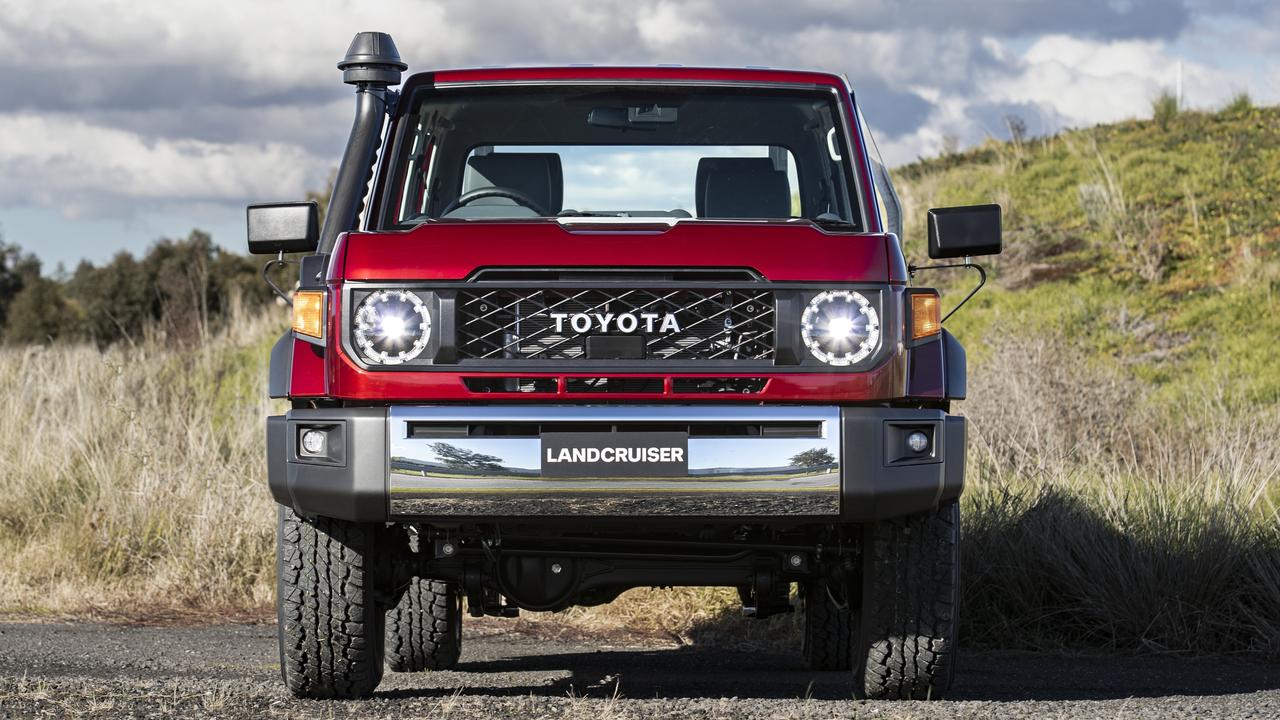2023 LDV eDeliver 7 new car review
The latest zero emission vehicle aimed at tradies is more than $20,000 cheaper than an EV ute and it’s ready to get to work in Australia.
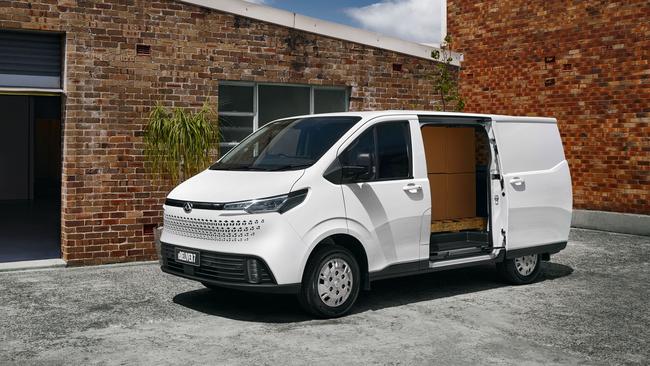
New Cars
Don't miss out on the headlines from New Cars. Followed categories will be added to My News.
Chinese brand LDV believes it has the load carrying muscle to take on the Toyota HiAce.
The eDeliver 7 is powered purely by electricity and hopes to tempt businesses to go EV with lower running costs and no CO2 emissions. A diesel powered version will arrive at a later date.
The newcomer arrives with a price premium, starting at about $66,000 drive-away for ABN holders or close to $70,000 for private buyers.
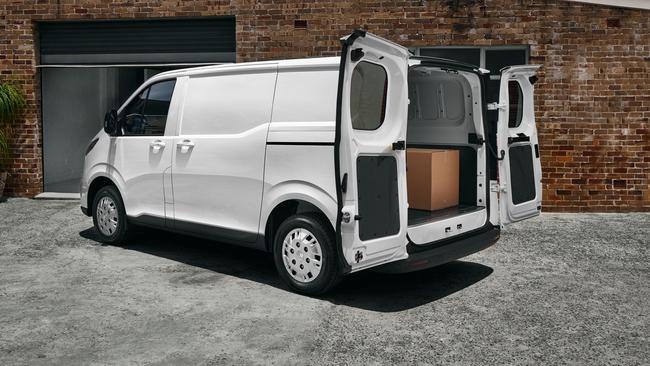
It’s also more than $20,000 cheaper than the electric LDV eT60 dual-cab ute.
The eDeliver 7 arrives with a modern look and spacious body.
It can be had as a low or high roof and with a short or long wheelbase. The largest iteration costs about $76,000 for private buyers.
A payload of between 1175kg and 1350kg depending on the model is impressive and the cargo volume ranges from 5.9 to 8.7 cubic metres.
There’s only a sliding door on the passenger side and barn doors at the rear.
The eDeliver 7 comes with three seats and has some luxe features such as heated outer seats and steering wheel are heated.

There’s also a 12.3-inch infotainment screen with Apple CarPlay and Android Auto activated via the single USB port (more would be handy).
The short wheelbase model comes exclusively with a 77kWh battery good for 318km of driving range.
Long wheelbase variants can be had with that same battery for about $72,000 or a larger 88kWh battery for another $3000 that extends the range to 362km.
It’s more than you pay for diesel alternatives, but there’s also the promise of much lower running costs.
Our experience suggests the eDeliver 7 uses something like 25kWh of electricity every 100km.
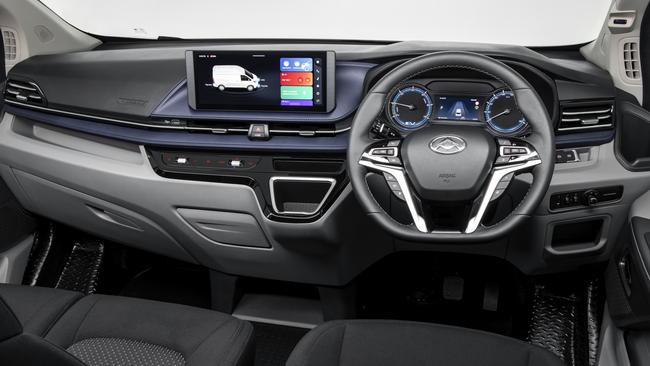
At 30c/kWh for electricity that’s about $7.50 per 100km. Solar or off-peak charging could yield a lot less, while public fast chargers can double that.
Still, it’s a lot less than diesel.
Servicing is every two years or 30,000km and the first three total $1165.
Charging can be done at up to 11kW with a wallbox for a full charge in about eight hours for the smaller battery or 9.5 hours with the larger battery. A 7.4kW single-phase wallbox would take about 11.5 and 13 hours.
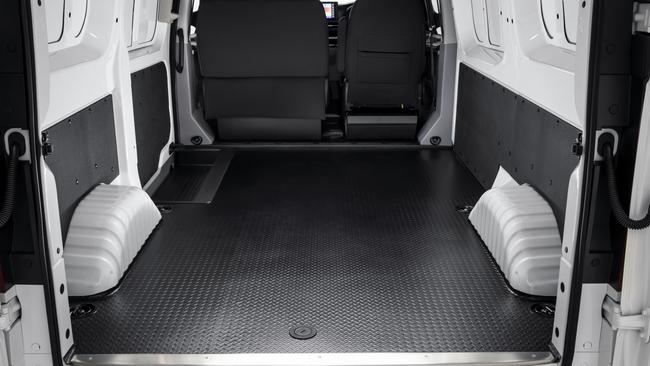
Fast charging can replenish the battery from 20-80 per cent in about 43 minutes.
The LDV has a familiar cabin layout peppered with handy storage bins of various sizes.
Fixed controls for the single-zone air-conditioning are handy although we’d love to see a volume adjuster on the dash rather than only the steering wheel.
There’s no digital speedo and the large pillar obscures forward visibility slightly on the driver’s side.
The lack of a footrest is a minor annoyance and big-footed drivers may find their left hoof grazing the spinning steering column that is partially exposed near the brake pedal.
Getting going involves selecting Drive from the steering stalk, at which point the electronic park brake automatically releases.
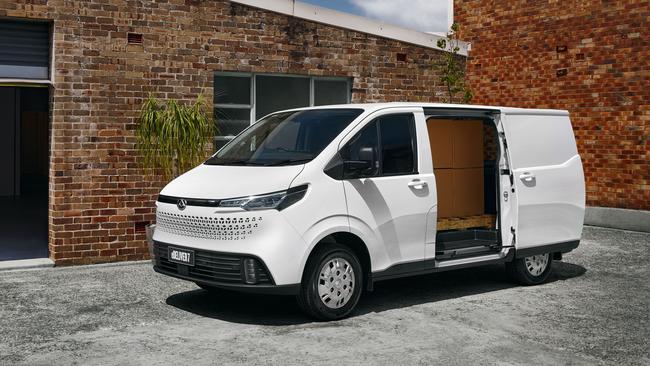
With 150kW and 330Nm there’s plenty of thrust – and enough to challenge the Giti tyres, especially when powering through a roundabout or corner.
On a wet road it’ll require right foot finesse.
Of the three drive modes Normal the most useful; Sport is too sensitive for the cut and thrust of suburbia and Eco limits the speed to 90km/h. You can also adjust between three levels of regenerative braking.
The LDV’s suspension is firm and can buck over big hits, marginally less so in the longer version. Each has light steering with a tight turning circle.
The eDeliver 7 occasionally chimes in with misjudged warnings but local tuning of the driver assist systems – which include blind spot warning and exit warning – has paid dividends in reducing annoyances.
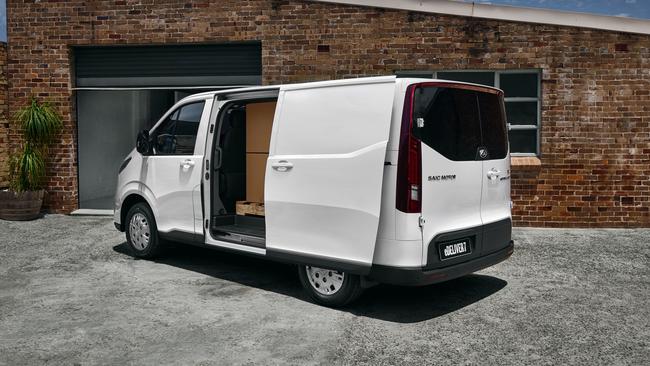
However, eager tradies may want to disable the speed warning.
Ultimately the numbers will determine whether the eDeliver 7 is a success.
While it’s pricier than its prime van competitors, warehouse charging and fewer check-ups is appealing. Throw in much lower energy costs and the very real desire for businesses to lower their CO2 emissions and the eDeliver 7 could tempt plenty.
VERDICT 3.5/5
The lure of low running costs and two-year servicing offsets a higher purchase price for an all-electric van that delivers on load-lugging nous.
LDV eDeliver 7 SWB Low Roof
Price: From about $70,000 drive-away
Warranty/servicing: 5 yrs/160,000km, $1165 for 6 yrs/90,000km
Safety: 6 airbags, auto emergency braking, blind spot monitoring, lane departure warning, lane keep assist, rear cross traffic alert, rear auto braking, fatigue reminder, exit warning, speed sign recognition
Power: Single electric motor, 150kW/330Nm
Range: 318km
Spare: Full size
Cargo volume/payload: 5.9 cubic metres/1350kg
Originally published as 2023 LDV eDeliver 7 new car review

